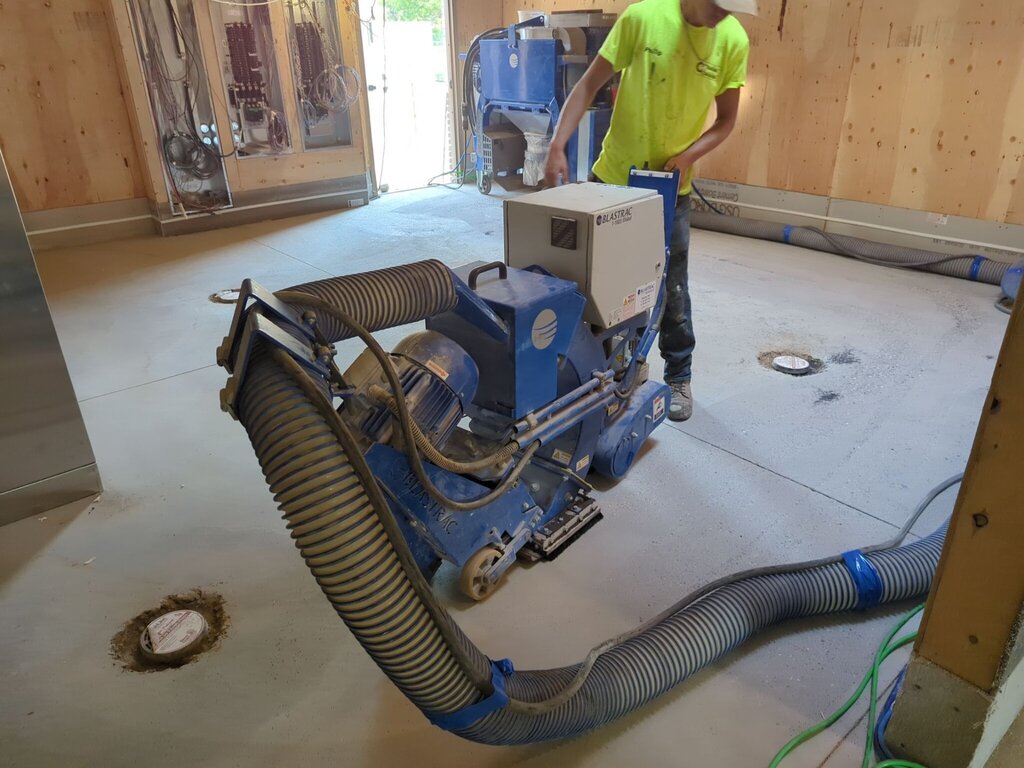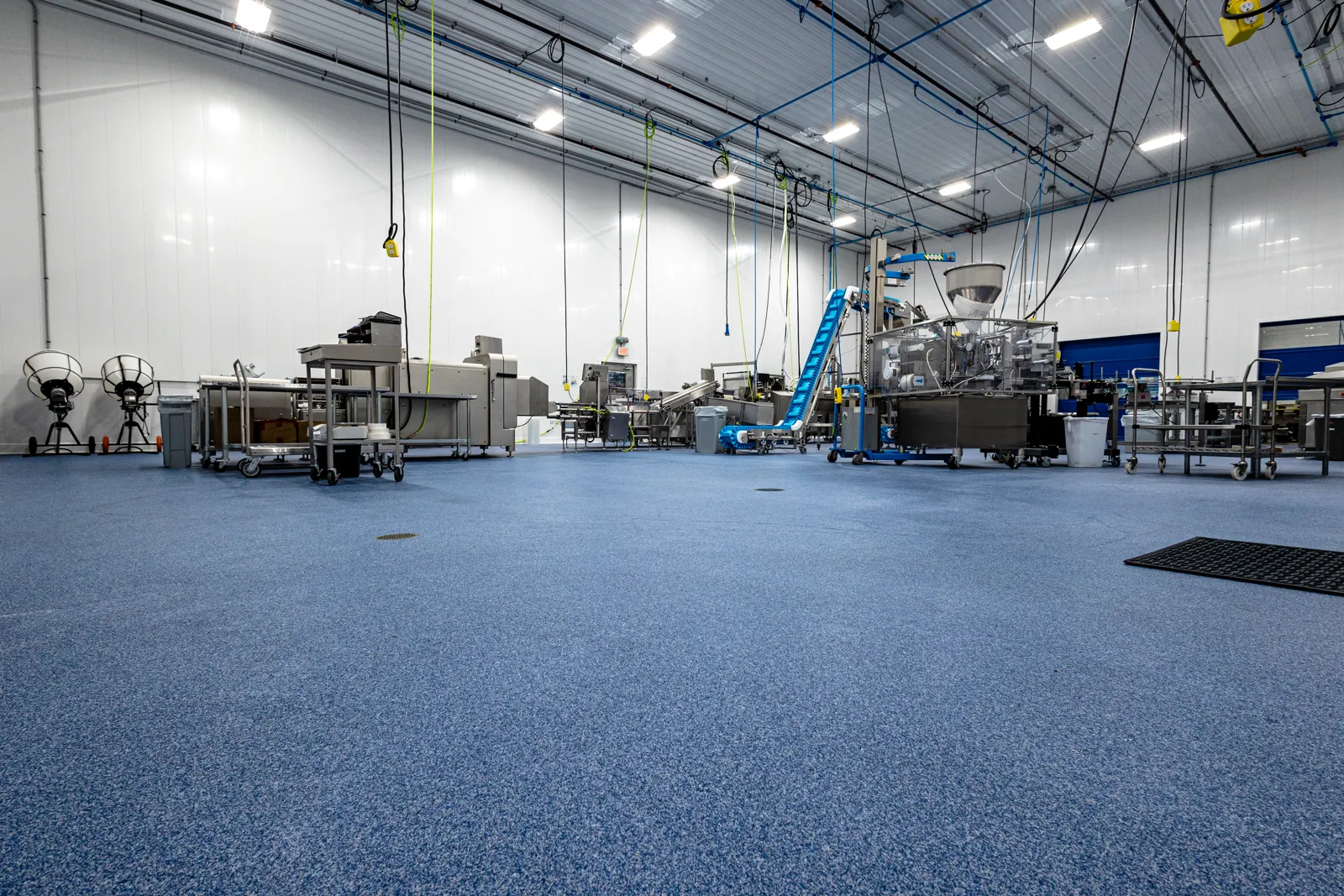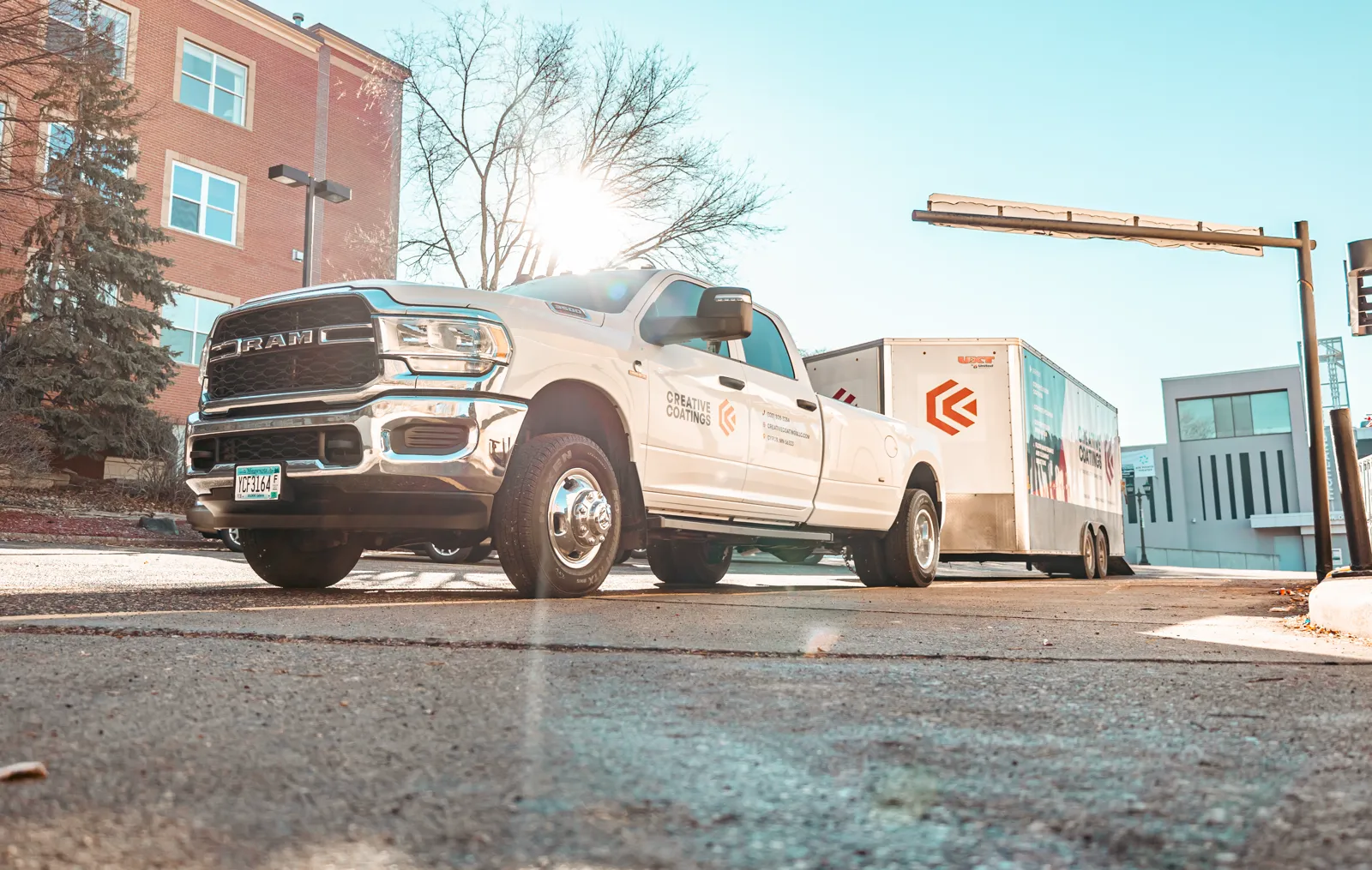A crucial step in surface preparation is etching a concrete floor before applying epoxy. It’s a process that can significantly impact your floor’s final look and durability. But how do you go about etching concrete? What tools do you need? And what techniques should you use?
This guide will explore two popular methods: etching concrete with a shot blaster and a grinder. We’ll delve into the benefits, considerations, and step-by-step techniques for each method. Whether you’re a DIY enthusiast, a home improvement professional, or just curious about concrete etching techniques, this guide is for you.
So, let’s dive in and learn how to etch concrete like a pro.
Table of Contents
Etching a Concrete Floor Before Applying Epoxy
Concrete etching is a process that prepares a concrete surface for further treatment. It involves creating a slightly rough texture on the concrete surface. This texture increases the surface area and improves the adhesion of coatings or overlays.
Etching is vital in many concrete design projects. It’s used in residential, commercial, and industrial settings. From driveways and patios to large-scale flooring projects, etching is a key step in achieving a durable and attractive finish. The process of etching can reveal the unique characteristics of the concrete. It can expose aggregate or create interesting textures and patterns. This makes etching a valuable technique in decorative concrete design.
In summary, etching a concrete floor before applying epoxy is a critical process in surface preparation. It enhances the durability, aesthetics, and performance of the concrete surface. Understanding its significance is the first step in mastering concrete etching techniques.
Shot Blasting for Concrete Etching: An Overview
Shot blasting is a popular method for etching a concrete floor before applying epoxy. It involves propelling small steel shots at high speed onto the concrete surface. This process removes the top layer of the concrete, creating a rough texture. Shot blasting is a mechanical process. It doesn’t involve any chemicals, making it an environmentally friendly option for etching concrete. It’s also a dry process, which means it doesn’t leave any residue that needs to be cleaned up.
There are different types of shot blasters available. They vary in size and power, and the choice depends on the size and nature of the project. Here are a few types:
- Walk-behind shot blasters: Ideal for small to medium-sized projects.
- Ride-on shot blasters: Suitable for large-scale projects.
- Handheld shot blasters: Perfect for tight spaces and corners.
Shot blasting is a quick and efficient method for etching concrete. It can cover large areas in a short amount of time. This makes it a preferred choice for commercial and industrial projects.
In conclusion, shot blasting is a versatile and efficient method for concrete etching. It offers a balance of speed, efficiency, and environmental friendliness. It’s an excellent choice for a wide range of concrete design projects.

The Benefits of Using a Shot Blaster for Etching Concrete Before Applying Epoxy
Shot blasting offers several benefits for etching concrete. One of the main advantages is its efficiency. It can cover large areas quickly, making it ideal for big projects.
Another benefit is the consistency it provides. Shot blasting ensures an even, uniform texture across the entire concrete surface. This is crucial for achieving a high-quality finish. Shot blasting is also environmentally friendly. It’s a mechanical process that doesn’t involve any chemicals. This makes it a sustainable choice for concrete etching.
In conclusion, shot blasting is a powerful tool for etching concrete. It offers speed, consistency, and environmental friendliness. These benefits make it a popular choice among professionals and DIY enthusiasts alike.
Step-by-Step Guide: Etching Concrete with a Shot Blaster
Etching concrete with a shot blaster involves a series of steps. Each step is crucial to achieving a high-quality finish. Here’s a step-by-step guide to help you through the process.
- Prepare the concrete surface. Remove any loose debris or dust. This ensures a clean surface for the shot blaster to work on.
- Select the appropriate shot size and type. The choice depends on the texture you want to achieve. Larger shots create a rougher texture, while smaller shots result in a smoother finish.
- Set up the shot blaster. Make sure it’s in good working condition. Check all parts for any signs of wear or damage.
- Start the shot blaster and begin etching the concrete. Move the machine in a consistent pattern to ensure even coverage. Avoid overlapping or missing any areas.
- After etching, inspect the surface. Look for any uneven spots or missed areas. If necessary, go over these areas again with the shot blaster, or an angle grinder.
- Once you’re satisfied with the etching, clean the surface. Remove any residual shot or dust. This prepares the surface for any subsequent treatments or coatings.
Remember, safety is paramount when using a shot blaster. Always wear protective gear and follow the manufacturer’s instructions. With careful planning and execution, you can achieve a perfectly etched concrete surface.
Looking to get your garage floor professionally coated? Creative Coatings would be honored to coat your floor! Get a free quote now by calling us (320)-808-3284 or by contacting us directly on our site!

Safety First: Precautions When Using a Shot Blaster
Using a shot blaster requires careful attention to safety. The machine is powerful and can cause injury if not handled correctly. Always wear protective gear. This includes safety glasses, ear protection, and sturdy gloves. A dust mask is also essential to protect your lungs from dust and debris.
Follow the manufacturer’s instructions for operating the shot blaster. Never attempt to modify or bypass safety features. Remember, your safety is paramount when working with powerful equipment like a shot blaster.

Grinding as an Alternative to Shot Blasting for Concrete Etching
Grinding is another popular method for etching concrete. It involves using a concrete grinder to create a rough surface on the concrete. Grinders work by using abrasive discs to chip away at the concrete. This creates a textured surface that can hold onto coatings and overlays.
There are different types of grinders available. Some are handheld, making them ideal for small projects or hard-to-reach areas. Others are larger and can cover a wide area quickly.
While grinding is effective, it can be more time-consuming than shot blasting. It also tends to create more dust, which can be a concern for indoor projects. However, with the right equipment and safety measures, grinding can be a viable option for concrete etching.
Shot Blasting vs. Grinding: Which Method to Choose?
Choosing between shot blasting and grinding for concrete etching depends on several factors. These include the size and scope of your project, the desired finish, and your personal preference. Here are some key points to consider:
- Shot blasting is faster and more efficient for large areas.
- Grinding can be more precise and is better for small or intricate areas.
- Shot blasting creates less dust than grinding.
- Grinding can be more cost-effective for small projects.
In the end, both methods have their advantages. It’s important to understand the specifics of your project and choose the method that best suits your needs. Always remember to prioritize safety, regardless of the method you choose.
Common Mistakes to Avoid in Concrete Etching
Etching concrete is a delicate process. Even small errors can lead to uneven surfaces or damage to the concrete.
One common mistake is not cleaning the concrete surface thoroughly before etching. This can result in an uneven etch and a poor final result. Another mistake is not choosing the right shot size or type for the concrete texture. This can lead to over-etching or under-etching. Lastly, rushing the process or not allowing enough time for the etching to take effect can also lead to subpar results. Always take your time and follow the manufacturer’s instructions closely.
Conclusion: Achieving the Perfect Etched Concrete Finish
Etching concrete with a shot blaster or grinder is a skill that requires knowledge, precision, and the right tools. By understanding the process and its nuances, you can achieve a beautifully etched concrete surface that is both durable and aesthetically pleasing.
Remember, the key to a successful etching project lies in careful preparation, choosing the right method, and meticulous execution. With these in mind, you’re well on your way to mastering the art of concrete etching.


